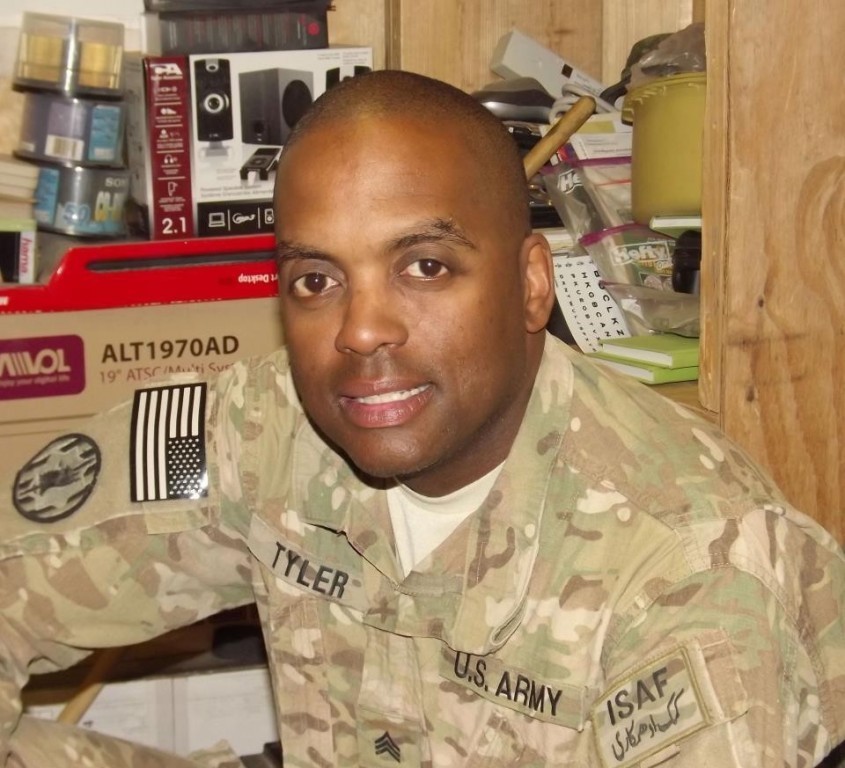South Nassau patient care technician serves his country
Saves soldier's life in Texas
When it comes to caring for those in need, Sgt. John Tyler knows the score, both on the battlefield and off.
Tyler, a 43-year-old Hempstead native, served in Afghanistan with the Army as a medic up until last year, and now works as a patient care technician in the cardiac telemetry unit at South Nassau Communities Hospital. This summer, he traveled to Fort Hood, Texas, for annual training with the Army National Guard — and the knowledge he acquired at SNCH helped him save a fellow soldier’s life.
While operating a treatment station at Fort Hood, Tyler was approached by a 50-year-old staff sergeant, who complained of feeling a general weakness. According to Tyler, the man was alert and adequately nourished but lacking pertinent past medical history — he could only say that he hadn’t felt like himself for a few days.
“As soldiers, we are trained to ‘tough it out,’ and I would be willing to guess that he had been feeling that way for some time, but didn’t want to appear weak, Tyler said.
Although the patient didn’t mention any difficulty breathing during normal activity, he did note that he had recently begun to feel winded after exerting himself, and that his feet hurt, as if his boots were too tight. Tyler took the man’s blood pressure, and found a systolic of 160 and diastolic of 100 — higher, the patient told Tyler, than it had ever been before.
“When the patient stated that his blood pressure was never that high, something in the training I received at South Nassau provoked me to dig a little deeper,” said Tyler. “… I ended up talking to him as if he were a South Nassau patient.”
After further investigation, Tyler found that the man’s feet were suffering from edema caused by lack of blood flow to the extremities, and was told that the patient had gained 20 pounds within the previous two weeks.
Thanks to his training at SNCH, Tyler knew exactly what to do. The patient was sent to a local civilian hospital for a cardiogram, where his heart was found to be pumping 40 percent less blood than usual — a key signal when looking for heart failure.

 60.0°,
Mostly Cloudy
60.0°,
Mostly Cloudy 




